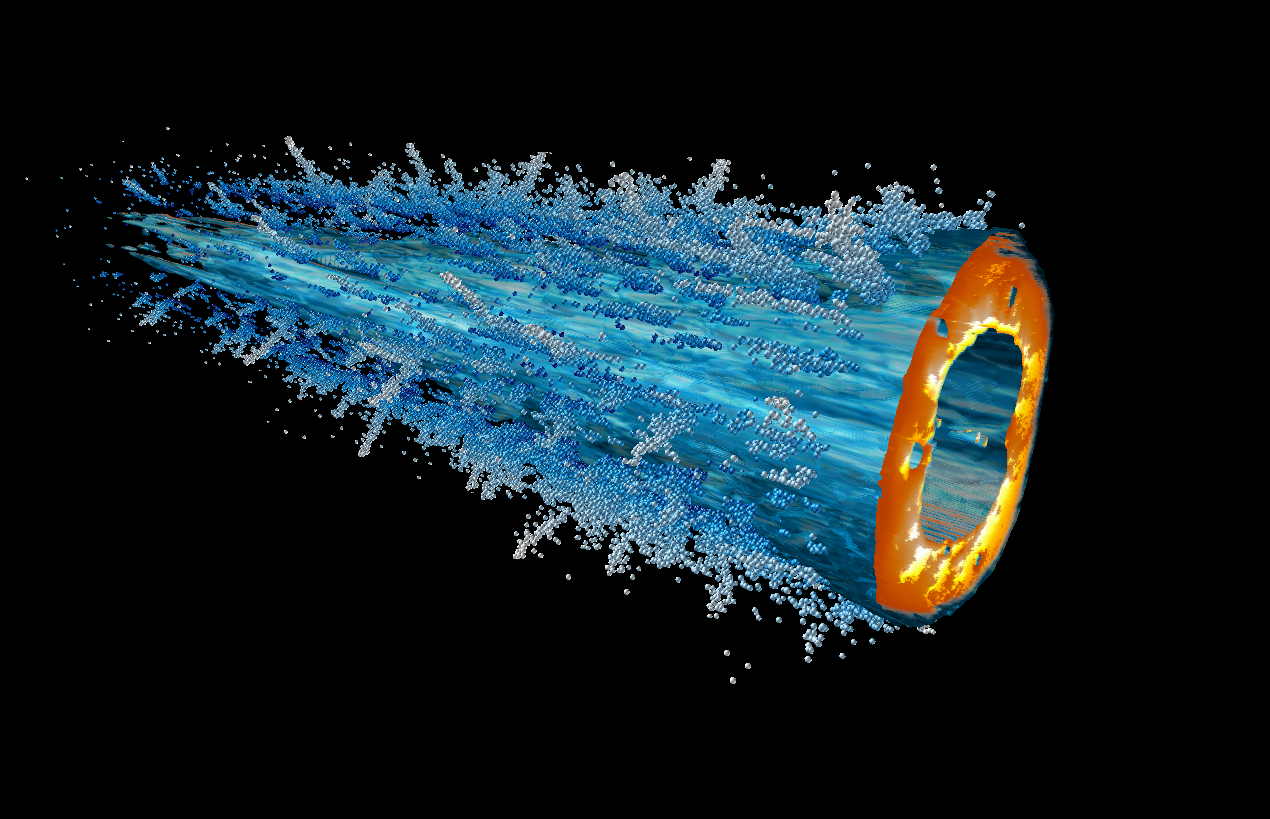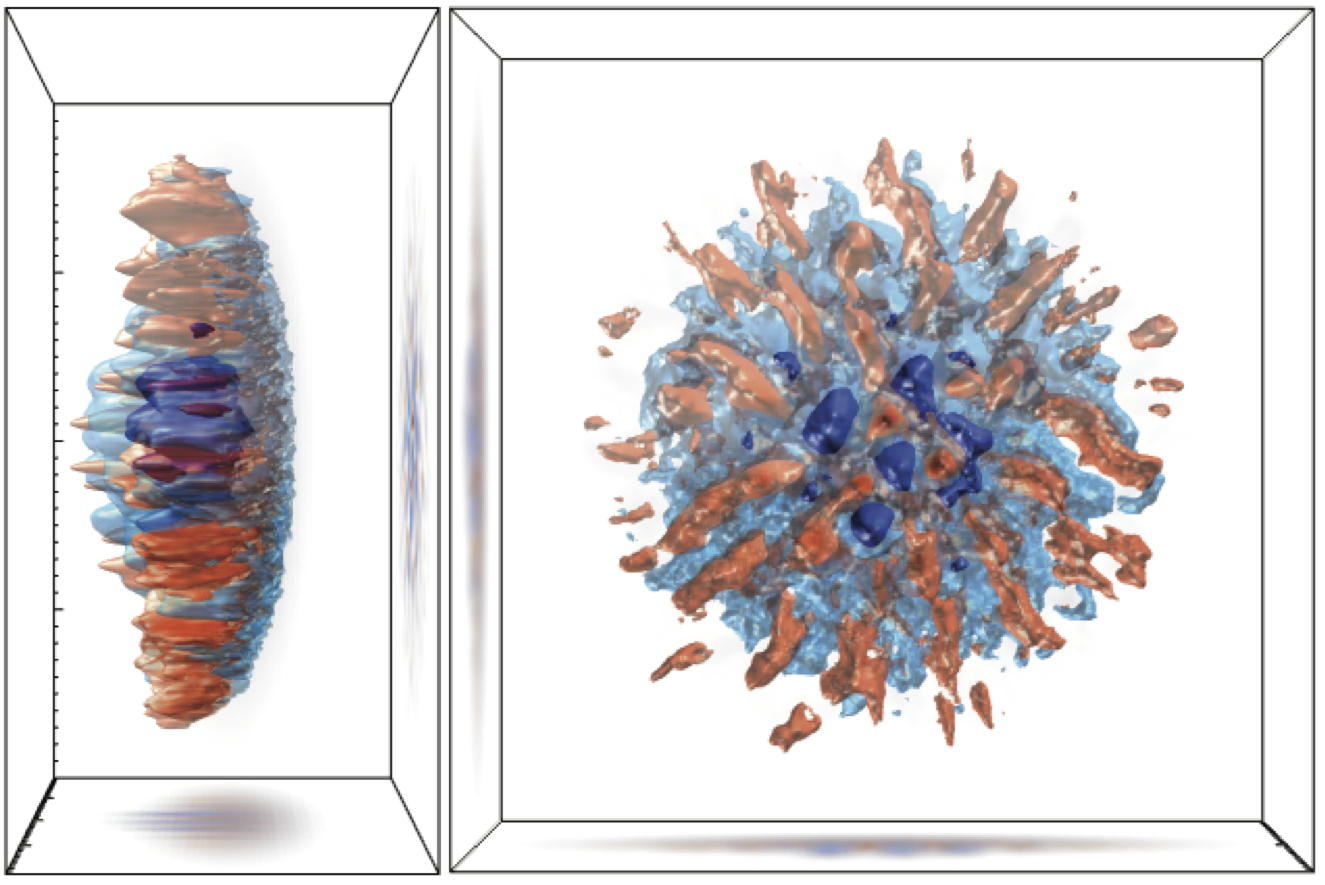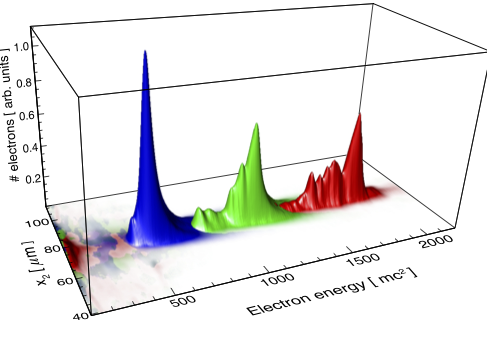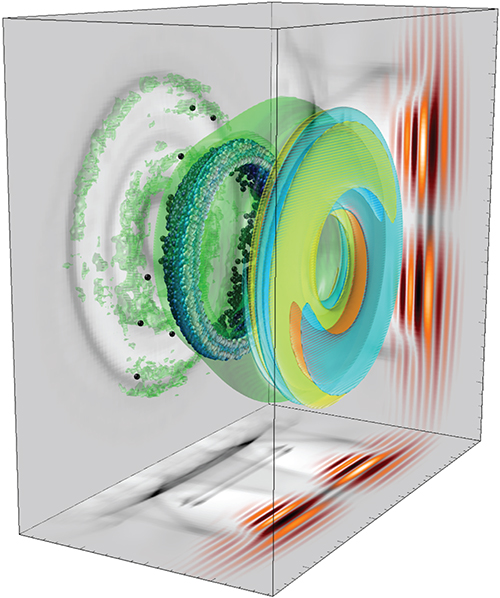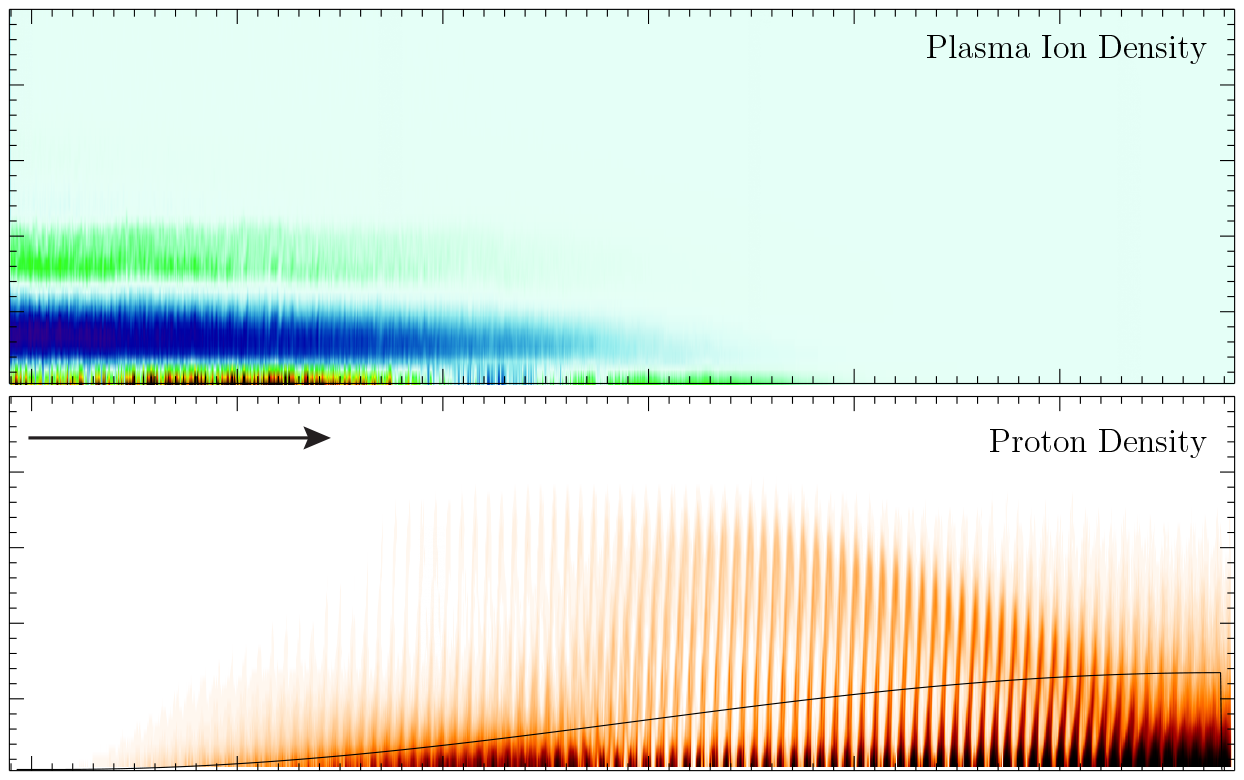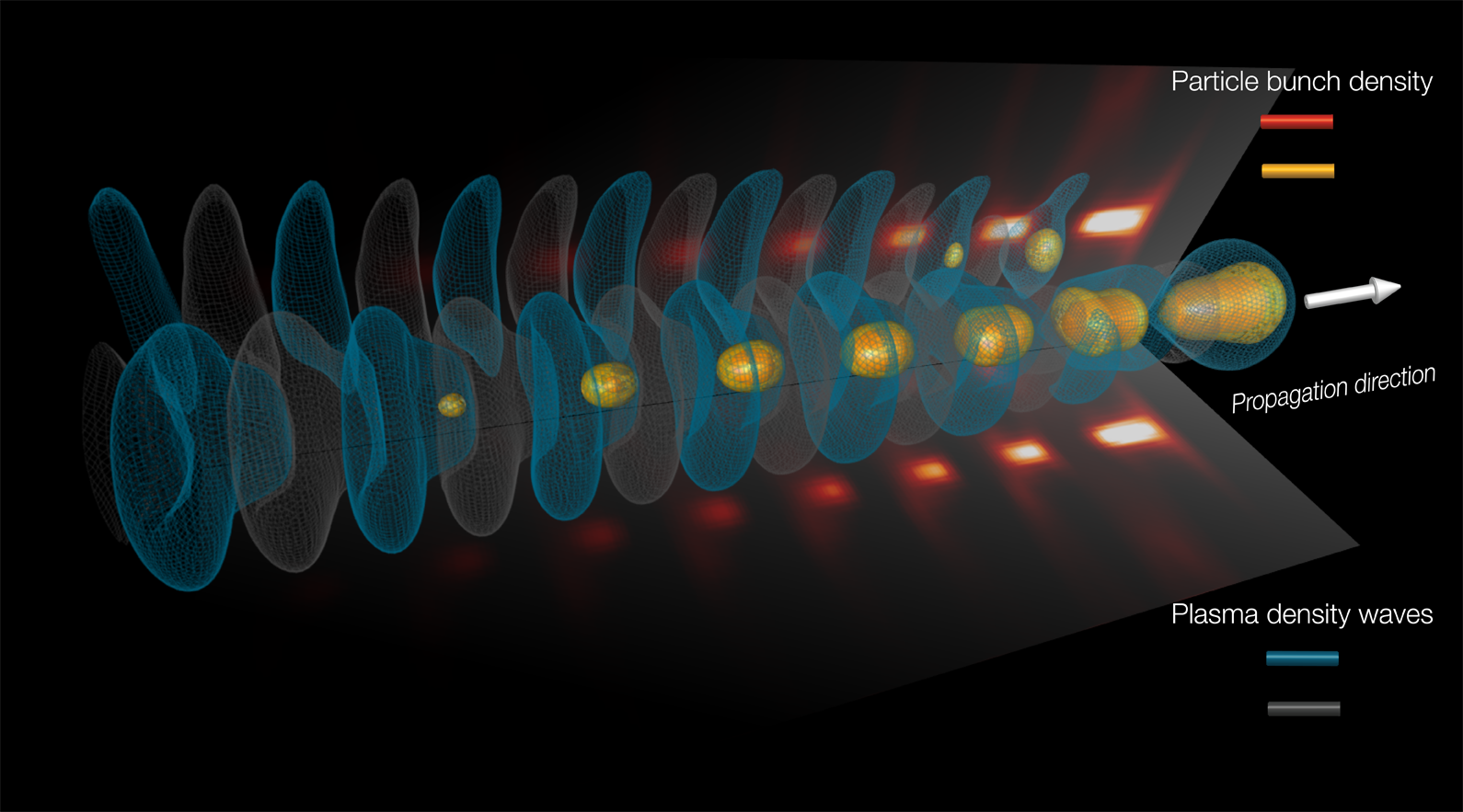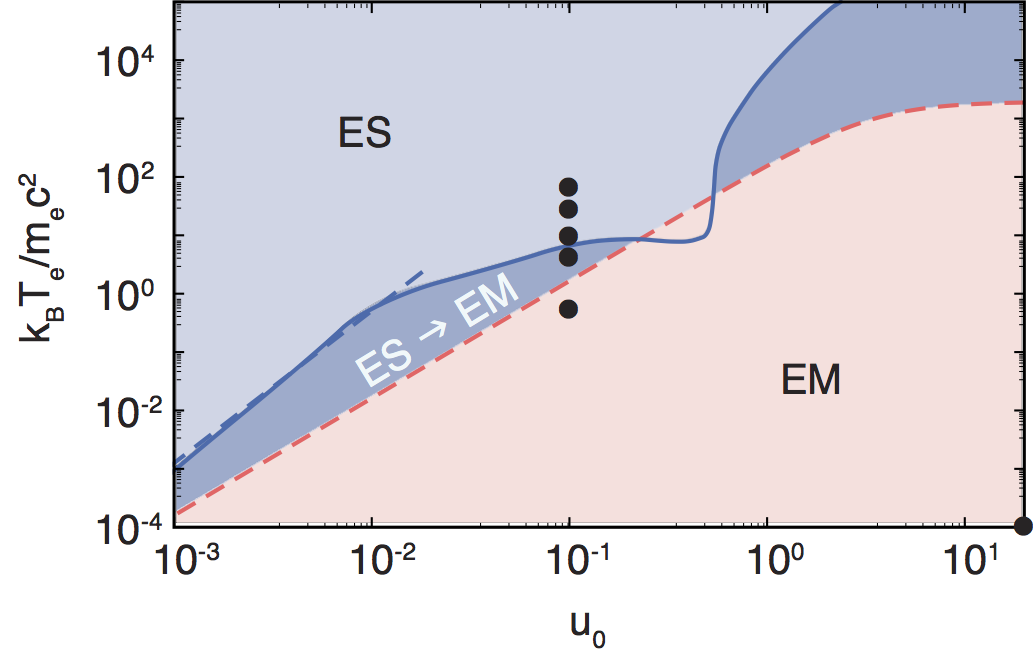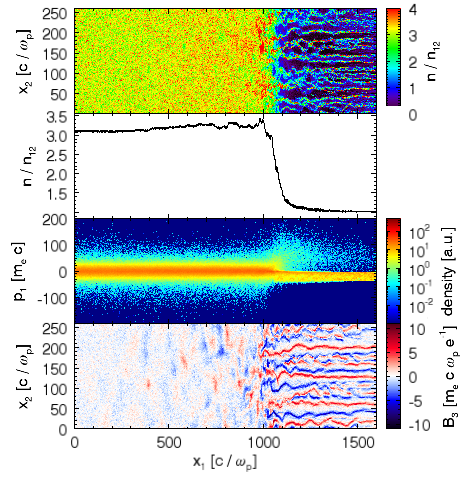-
The origin of cosmic magnetic fields probed with intense lasers
Read moreIn collaboration with physicists from Laboratoire d’Optique Apliquée (LOA), EPP researchers have tested a model for the origin of large-scale magnetic fields in the universe. The origin of magnetic fields in astrophysics is an outstanding scientific mystery, which has been investigated using powerful telescopes that probe our universe. Observations from telescopes can be viewed as data from experiments whose initial conditions cannot be controlled and tuned by human beings. In order to face this limitation, researchers have recently begun to reproduce astrophysical conditions under controlled environments in the laboratory. EPP team members Jorge Vieira and Luís Silva and LOA researchers have now used intense lasers in plasmas to test a model for the origin of cosmic magnetic fields in the laboratory. The work involving experiments, theory and simulations was published in Nature Physics and can be found here.
April 27, 2015 -
New exotic state of matter created in the laboratory for the first time
Read moreAn international team of scientists involving epp team researchers Nitin Shukla, Jorge Vieira and Luís Silva recently announced the discovery of a new state of matter, which is electrically neutral and containing equal parts of matter and anti-matter. This new substance had never been observed before, and has been subject of many theories that predict that it could be observed near the boundary of black holes and produced through violent astrophysical explosions. Experiments combined with massive particle-in-cell simulations have now shown that this exotic substance could be produced when an intense laser propagates in a plasma producing ultra-relativistic electrons that can then be transformed in a fireball electron-positron beam with equal parts of matter and anti-matter. These results were published in Nature Communications. The paper can be found here.
April 27, 2015 -
All optical experimental tests for radiation reaction at moderate laser intensities in PRL
Read moreepp team researchers have proposed a configuration to test radiation reaction in the radiation dominated regime which takes advantage of state-of-the-art laser systems currently available. The configuration has been explored with massively parallel simulations that take into account the effect of radiation reaction in the particle dynamics via the Landau-Lifshitz equation. This work has been published in Physical Review Letters by Marija Vranic et al. and can be found here.
The portuguese version of the press release is below:Cientistas propõem teste experimental para a equação mais exótica da física clássica
Uma equipa de investigadores do IPFN/IST determinou as condições experimentais que poderão ser exploradas para testar uma das equações mais exóticas da física clássica, a equação de Lorentz-Abraham-Dirac (LAD). Esta equação descreve a dinâmica de uma partícula carregada, como por exemplo um electrão, que, ao ser acelerada, perde uma parte importante da sua energia por radiação emitindo luz e…
October 1, 2014 -
Positron acceleration in a doughnut plasma wave published in Physical Review Letters
Read moreTheory and numerical simulations suggest that lasers can create doughnut plasma wakes for positron acceleration in compact plasma accelerators. One of the fundamental challenges for designing a plasma based linear collider is to accelerate positrons in non-linear plasma wakefields. Researchers have long considered that this regime, which can lead to very high accelerating fields, could not be used to accelerate positrons. Using particle-in-cell numerical simulations, EPP team member Jorge Vieira in collaboration with José Tito Mendonça from the Group for Lasers and Plasmas at IST, showed that lasers carrying angular orbital momentum excite doughnut shaped strongly non-linear plasma waves for high-energy positron acceleration. These results may then open the way for future designs of compact plasma based linear colliders in strongly non-linear regimes. More information can be found here.
May 28, 2014 -
Suppression of plasma ion dynamics studied in paper published in Physics of Plasmas
Read moreThe largest plasma based acceleration experiment in the world has been approved at CERN. This experiment will use 0.5 TeV proton bunches to drive intense plasma waves capable to accelerate particles to high energies. One of the physical questions to be clarified is the role of the background ion motion. This work carried out by EPP team members Jorge Vieira, Ricardo Fonseca and Luís Silva, in collaboration with Warren Mori from University of California, Los Angeles, shows that the the background plasma ion motion can strongly reduce accelerating fields. The work also identifies gases that could be used to avoid the deleterious effects associated with the motion of the background plasma ions. More information can be found here.
May 28, 2014 -
Simulations of stable self-modulated wakefields published in Physical Review Letters
Read moreOne of the challenges in future plasma based acceleration experiments at CERN and at SLAC using long hadron and lepton bunches is to stabilise the driver beam propagation for long propagation distances. In these experiments the beam dynamics will be dominated by competing mechanisms between self-modulation, which leads to large accelerating fields, and hosing, which leads to beam break-up. The work by EPP team member Jorge Vieira in collaboration with Patric Muggli from Max Planck Institute for Physics in Munich and Warren Mori from University of California, Los Angeles, shows conditions where a new mechanism for hosing suppression can operate. More information can be found here.
May 28, 2014 -
Magnetogenesis explored in simulations published in Physical Review Letters
Read moreThe universe is filled with magnetic fields. However, it is widely accepted that in the early universe they did not exist. An important scientific question is how these magnetic fields could have grown from nothing to the level we find them today. epp team members, Ricardo Fonseca and Luís O. Silva, collaborated with Kevin Schoeffler, and Nuno Loureiro on a paper published in Physical Review Letters addressing this issue. They demonstrate using first principle simulations how magnetic fields are formed by only gradients in the pressure and density. This generation of magnetic fields also plays an important role in many high power laser experiments, which generate magnetic fields on the order of megagauss. These fields form via both the previously predicted Biermann battery mechanism as well as a kinetic plasma instability known as the Weibel instability, depending on the system parameters. These results should have an important impact on both the…
May 10, 2014 -
Paper published in Phys. Rev. Lett. demonstrates the seeding of the self-modulation instability
Read more
Paper ’Seeding of Self-Modulation Instability of a Long Electron Bunch in a Plasma’ by Y. Fang et al was published in Physical Review Letters. It describes a series of experiments performed in the Accelerator Test Facility (ATF) at Brookhaven National Laboratory demonstrating the seeding of the self-modulation instability by long bunches with sharp rise density profiles. This work supports the concept of similar experiments in the future, e.g. Self-Modulation Instability (SMI) experiments using long bunches of relativistic protons. More information can be read here.
March 24, 2014 -
Paper published in Sci. Rep. explores the nature of collisionless shocks in laboratory conditions
Read morePaper “Exploring the nature of collisionless shocks under laboratory conditions” by Anne Stockem et al. was published in Scientific Reports. It addresses the transition between electrostatic and electromagnetic shocks and identifies the relevant regimes for an efficient acceleration of ions and a realisation in the laboratory. More information can be read here.
February 6, 2014 -
Paper published in PPCF addresses the key quantities that determine the properties of electron-positron shocks
Read moreThe paper “The impact of kinetic effects on the properties of relativistic electron-positron shocks” by Anne Stockem et al. (2012) was published in Plasma Physics and Controlled Fusion, vol. 54, p. 125004. We show that the transition from a cold upstream to a hot downstream determines the steady state solution of the shock, with deviations of 10% from the standard MHD model. This allows for a quantitative definition of the shock transition region. More information and the full text of the paper can be found here.
January 15, 2014
Posts tagged with ‘Publications’
extreme plasma physics > Publications

